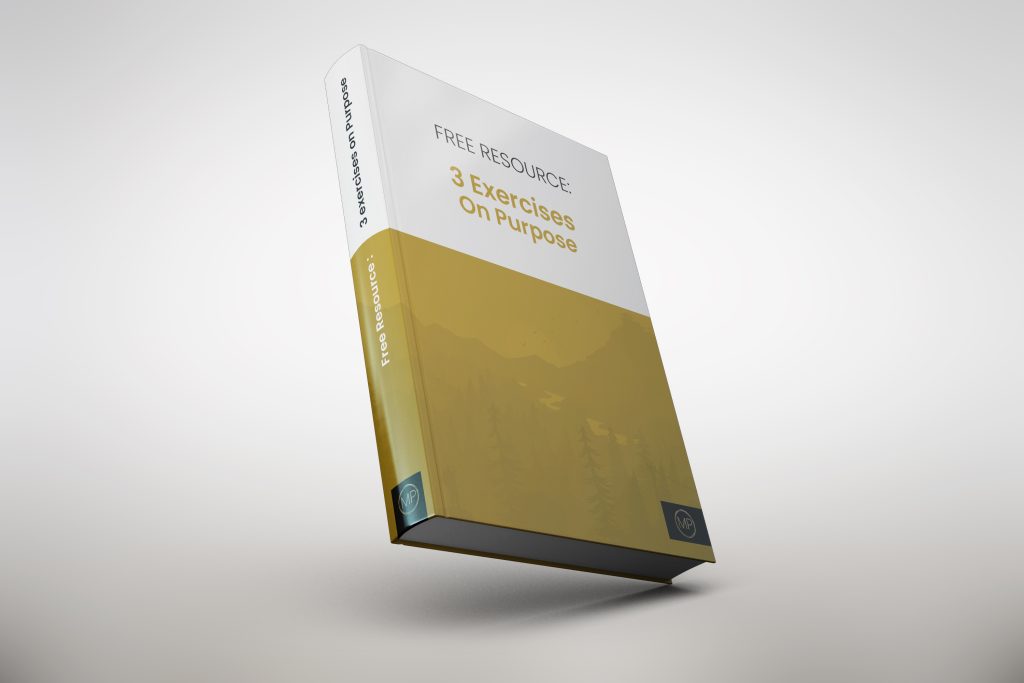Knowing how to stay focused with greater mindfulness in our current times is as challenging as ever. There is a vast amount of distraction from social media, technology, multifaceted advertisements across our townships and cities and also pressure to be a ‘success,’ from a view point of made up pre-requisites by large companies. Sometimes positive visualization about our future is a very healthy expression; as is warmly remembering a past positive memory. At other times it is healthy and useful to be focused with greater mindfulness; when talking to a loved one, when partaking in a work-related task and in many other areas of our life. It is important to not judge yourself as we can all lose our focus at times with many underlying variables at play. If we start to create a life that is healthy for us from exercise, meditation, nutrition, nature and quality social relations, then we can focus more on the important things in life rather than advertisements of a perceived dream lifestyle.
What is Mindfulness and Why is it Important?
You can learn more about the difference between mindfulness and meditation here – Mindfulness Meditation for Beginners – Meaningful Paths
‘Simply put, mindfulness is moment-to-moment non-judgmental awareness.’ – Jon Kabat-Zinn
When we practice mindfulness in all its forms, we can begin to understand our emotions at a deeper level and be aware of our needs so that they can be met in a healthy way. If we rush around all day fueled on too much caffeine, with too many tasks and too little time; we may act habitually with underlying anxiety. When we practice mindfulness, we can calmly assess when our emotions change, notice perhaps why that change has taken place, sit with negative emotions calmly to explore them and then calmly do what is healthy for ourselves to bring more positive emotions back into our life.
When we practice mindfulness, we can have deeper conversations and connect with people in a more congruent manner. We can notice the emotions behind people’s words rather than just the words themselves.
When we practice mindfulness, we practice to remain focused on a task, and we can obverse when our minds wander, without judgement and calmly come back to the present.
Mindfulness does not necessarily need to done in the form of meditation. For example, you may walk mindfully and be present minded when breathing the air in nature, looking at the birds in the trees and appreciating mother nature. You may fully embrace a hug from a loved one where your full focus is on your care rather than work.
Mindfulness can help you on how to stay focused in your every day life and also can help you how to focus on work.

How Does Attention Span Affect Mindfulness?
According to Frontiers in Human Neuroscience, 2018:
“Past research has found that mindfulness meditation training improves executive attention. Event-related potentials (ERPs) have indicated that this effect could be driven by more efficient allocation of resources on demanding attentional tasks, such as the Flanker Task and the Attention Network Test (ANT).”
A study by Randye J. Semple, 2010 showed that meditation practices can help individuals improve their concentration when previously having challenges with their attention span.
Like practicing a physical exercise each day such as weight lifting, we get better over many weeks and many months if the exercise is done well. Like practicing an academic study such as mathematics, we can improve each week and each month. In the same manner as with meditation and mindfulness practices, if we do them regularly we will organically improve our focus and also be able to return more smoothly from a place of distraction back to a calm place or present mindedness more effectively.
The Average Attention Span
Why is my attention span so short?
What is the average attention span? How has the average attention span changed over the last decade or more?
According to marketing company wyzowl:
- In the year 2,000, the average attention span was 12 seconds; and in 2015 the average attention span was 8.25 seconds.
- 25% of teenagers forget major details of close friends and relatives.
Of course with attention span, there are many variables and the above can relate to having full focus, to then a moment of distraction, before coming back to focus again. The below areas of study portray more of a teaching environment whereby you are more likely to have a fairly solid attention span over a set period of time; albeit naturally pockets of the mind losing focus within that time scale can occur.
What is the average attention span of children? How can I help my child become more present?
Brain Care Organisation, Brain Balance shared the average attention spans for age groups:
- 2 year olds: 4 to 6 minutes
- 4 year olds: 8 to 12 minutes
- 6 year olds: 12 to 18 minutes
- 8 year olds: 16 to 24 minutes
- 10 year olds: 20 to 30 minutes
- 12 year olds: 24 to 36 minutes
- 14 year olds: 28 to 42 minutes
- 16 year olds: 32 to 48 minutes
It is important not to judge yourself if you lose your focus, or if you have a particular day where your mind is struggling. The important thing is to practice everyday at mindfulness, becoming a better communicator, more self-compassionate with yourself and building a healthy environment for your body and mind to be as healthy as possible.
How to Increase Attention Span with Mindfulness
How to increase attention span with mindfulness practices:
- Remove judgment on right or wrong. We cannot force focus or being present minded. Mindfulness practices are not a task to win a trophy; they are practices to organically improve upon with a calm, non judgmental stance. Mindfulness practices will feel uncomfortable at first like any new practice.
- Start with things that you enjoy; walk in nature and focus on a view, a tree, animals and take several deep breaths. Look at that piece of nature with admiration and focus on as many details as you can. Without initially realizing it you may have been fully focused for 10-20 seconds without thinking about work, social pressures, anxieties. Take the time to do this several times per day.
- When in conversation with someone; focus intently on their words, their tone, and their body language. There is always a deeper layer to what someone is saying beyond just their words. It might be the case that someone says they are happy and their tonality and body is congruent with such words. It might be the case that someone says they are excited about a new job, but their voice is shaky and they fidget. Walk into conversations with compassion but also observe deeper meaning.
- Pay attention to you body; what sensations do you feel in your head, your chest, your abdomen and so on. Are we breathing deeply into our lungs? Or are we breathing in a shallow manner only in our chest? Take the time throughout the day to check in on your body.
By choosing things to focus on each day such as nature; by focusing on deeper layers in conversations with others, and by checking in on our bodies throughout the day, we will naturally get much better at being mindful. Mindful practice of our self, others around us and nature covers the majority of life’s answers and much of our happiness. If we pause for a moment and reflect; if we are comfortable in our own skin, if we can create deep human connections, and if we can can work harmoniously with nature, does anything else outside of these domains matter too much? Practice mindful tasks around these three domains each day and many of other life’s events will look after themselves.
Our resilience course has many more tips on mindfulness, resilient thinking, and creating strong social bonds. We also have a course postnatal pilates & mindfulness for new mums which can help new mums regain their strength.

Tips on How To Stay Focused
Pierre Azzam, MD recently shared his thoughts about single-tasking, tips to help you concentrate, and how to stay focused with Meaningful Paths;
‘Your attention is under constant strain, and living in the 21st century isn’t helping. You’re bombarded by electronic distractions and surrounded by a hustling culture that conflates crowded to-do lists with personal value. In response, you may feel compelled to split your attention and multitask. But even when multitasking FEELS productive; research suggest that it comes at the expense of ACTUAL productivity, nit to mention peace of mind. So how can you channel peace AND productivity? Try your hand at single-tasking: the deliberate practice of directed awareness to one action at a time.
Like so many practices of directed awareness (i.e. “mindfulness”), single-tasking involves a few requisite steps.
- Set a clear intention as the anchor.
- Acknowledge distractions as they emerge.
- Return gently to the intended act.
Repeat steps 2 and steps 3.
In many mindfulness practices, that anchored attention takes the form of awareness to the breath.
It makes sense; the breath is available, rhythmic and portable.
But mindfulness is not limited to moments of breathy meditation.
Consider using the practice of meditation like physical training, as an opportunity to build the muscles of mindfulness, intention, awareness, direction and redirection. From there, you may set intentions and direct that same level of awareness to the stuff that matters most throughout your day. Maybe it’s building your business, or connecting with your family, or enjoying time outdoors. The key is single-tasking: returning to the intended action even when you get distracted.
The step2/3 toggle is where many (I included) tend to struggle the most. We may gibe in to restlessness, judgment, curiosity, and fear or missing out. But in that toggle is an important reminder:
- Return gently
- Not forcefully
The process of shaming or strong-arming ourselves to stay on track only creates extraneous judgements, sensations, and emotions that ultimately distract us from our intention. By giving ourselves the space to return to an intended action without flooding ourselves with distraction, we allow our neural networks of sustained attention to actually get to work.’
Concluding Thoughts
We should not judge ourselves or become angry or try to force our full focus. People make mistakes every day and forget things all of the time. It is much better to organically practice mindful tasks each day around our self, with others when conversing, and in nature. If we we also create a healthy environment for ourselves, positive morning routine, good nutrition, lots of nature and practice deep human connections; we will inherently become healthier, more passionate for life and less anxious about the things that do not matter. Much of our minds wandering comes down to ruminating over the past or worrying about the future. It can be healthy to dream about a better future and also to warmly remember the past; but if we create a healthy environment for ourselves we can remove much of our underlying anxieties. Practice mindfulness each day in a calm and gentle way around your mind and body, conversations with others and when in nature and organically you will have stronger focus on what matters to you in life, how to stay focused and less judgment when you lost track from time to time.
Wishing you health and well-being.
References
Normal Attention Span Expectations By Age (brainbalancecenters.com)
The Human Attention Span [INFOGRAPHIC] | Wyzowl
Image Reference
linkedin-sales-solutions-7pZbpEFgVi4-unsplash


